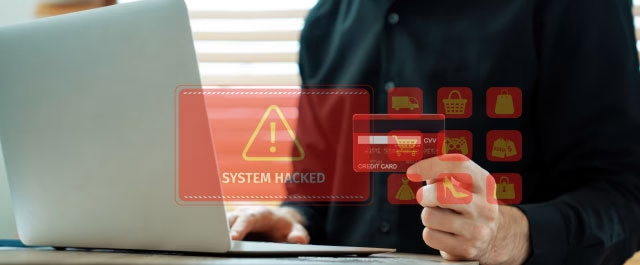From Data to Action
In today’s increasingly digital and dynamic global financial ecosystem, economic crimes adapt and evolve rapidly. Money laundering, terrorist financing, and various types of fraud leverage new technologies, regulatory gaps, and control weaknesses to advance undetected.
Given this scenario, early identification of warning signs has become an essential component of any compliance and risk prevention strategy. However, simple detection is not enough: processes, structures, and tools are required to interpret, investigate, and respond to unusual activities quickly, effectively, and in compliance with regulations.
What do we mean by red flags?
Red flags are indicators or patterns that deviate from expected behavior and could be related to illegal activities or activities that are not justified from a legal, commercial, or financial perspective.
Some common examples include:
- Repeated transactions just below the reporting threshold,
- Financial transactions inconsistent with the customer’s profile,
- Transfers to or from non-cooperative jurisdictions,
- Sudden changes in the frequency or amount of transactions,
- Activities outside of normal business hours or in unusual locations,
- High volumes of chargebacks at merchants or POS terminals.

These signs are not, in and of themselves, evidence of a crime, but they should trigger internal review protocols and, where appropriate, reporting procedures to the relevant authorities.
The Importance of a Structured Approach
In my experience as a financial crime prevention specialist, one of the biggest challenges isn’t detecting a signal, but rather managing the risk it represents. To achieve this, it’s essential to have an integrated strategy.
01
Clear and up-to-date transactional profiles of customers, employees, suppliers, and businesses.
02
Automation of business rules and risk models, adjustable to different levels of criticality.
03
Qualitative and quantitative risk matrix, which considers economic activity, type of client, channel, geography, and volume.
04
Well-defined analysis and decision-making processes, with traceability, evidence, and coordination between areas.
05
Continuous monitoring and system feedback, to reduce false positives and improve effectiveness
Fraud monitoring in issuers and acquirers
- Transactions in geographies incompatible with the user’s profile,
- Multiple failed transaction attempts in a short period of time,
- Dramatic changes in spending patterns or frequency of use,
- Unusual activity at night or on non-working days,
- Merchants with high levels of returns or chargebacks,
- POS terminals that exhibit repetitive or suspicious patterns,
- Transactions that significantly exceed the historical average,
- Use of devices in unregistered locations.
The key is to build dynamic behavioral profiles of both users and merchants that allow for contextual identification of deviations and minimize unnecessary interruptions.
Internal Risk:
The Silent Challenge
One of the most sensitive risks for any financial institution is internal fraud. This involves illicit conduct by employees, former employees, or third parties with privileged access to systems, data, or funds.
- Unauthorized access to sensitive systems,
- Irregular changes to customer accounts or profiles,
- Approvals or cancellations outside of normal business hours,
- Relationship between internal operations and risky customers.
This type of risk requires not only technological vigilance, but also clear integrity policies, ongoing training, and an ethical culture.
Technology as a Strategic Ally
The current complexity of the market and the volume of data to be analyzed make manual management of warning signals unfeasible. Therefore, specialized technological solutions have become indispensable.
- Automate customer validation, scoring, and classification processes,
- Detect deviations based on configurable algorithms and rules,
- Integrate national and international restrictive lists,
- Centralize alerts and manage cases with full traceability,
- Generate regulatory reports and management dashboards in real time.
Technology does not replace professional judgment, but it enhances it, facilitating data-driven decision-making, reducing false positives, and optimizing resources.
Recommendation to my clients: Anticipate risk with intelligence and technology
In this article, I share my positive experience with Sentinel, one of the leading companies in the sector, recognized for its capacity for innovation and for offering effective responses to security challenges with its high-impact technological solutions aimed at financial institutions.
Sentinel not only complies with the most demanding regulations in the sector, but also elevates its analysis, response, and prevention capabilities to a new level, with specific solutions for AML, issuer, acquirer, and internal fraud, among others.
I have had the opportunity to participate in the implementation of Fraud and Money Laundering Prevention solutions in multiple institutions—including banks, fintechs, cooperatives, and central banks—with which I collaborate as an advisor.
In all cases, the experience with Sentinel has been highly satisfactory; its set of solutions operates within a solid, flexible, and results-oriented technological structure.
Conclusion: Seeing the signs is not enough; you have to know how to act
Detecting warning signs in suspicious transactions is not a task exclusive to compliance: it is a shared responsibility that involves technology, processes, organizational culture, and strategic vision.
Today, more than ever, entities that invest in predictive models, behavioral analysis, and intelligent monitoring are better prepared to anticipate crime, protect their reputation, and comply with current regulations.
Ultimately, it’s not just about compliance: it’s about protection. Because the signs are always there. The difference lies in who has the capacity—and the tools—to see them in time.
I encourage financial institutions to evaluate their current models and consider solutions like Sentinel’s to strengthen their response capacity to emerging risks.
Ready to protect your organization from within?
Learn how Sentinel’s financial crime prevention solutions can help you today.
Autor:

Luana Cristina Romero de Souza
AML, GRC and Regulatory Executive
-
- Top Voice LinkedIn – Brazil Fintech Top 100.
- Regulatory Compliance Specialist for the International Financial Market and Cryptoassets.
- International speaker and instructor in courses on the topics of: Compliance, Risk, Finance, Blockchain Technology, and Cryptoassets.
- Academic Director of international GRC and AML certifications.
- Bachelor’s degree in Accounting, MBA in Auditing, Comptrollership, and Finance – Getúlio Vargas Foundation – FGV (Brazil).
We recommend you
Artificial Intelligence in Money Laundering Prevention
Artificial Intelligence in Money Laundering Prevention A New Era of Intelligent DetectionBy Luana Cristina Romero de SouzaMoney laundering remains one of the greatest threats to the integrity of global financial systems. As criminal networks become more sophisticated,...
Organizational integrity: the silent antidote to internal fraud
Organizational Integrity: The Silent Antidote to Internal FraudBy Luana Cristina Romero de SouzaIn my 15+ years of experience in preventing and combating money laundering and fraud, I’ve learned that internal threats often represent an underestimated risk. As a...
What is the true cost of a fraud prevention or AML solution?
What is the true cost of a fraud prevention or AML solution? What no one tells you Some tech decisions seem simple at first… until their true costs start to surface. When it comes to anti-fraud and anti-money laundering (AML) software, it’s easy to be guided by the...




